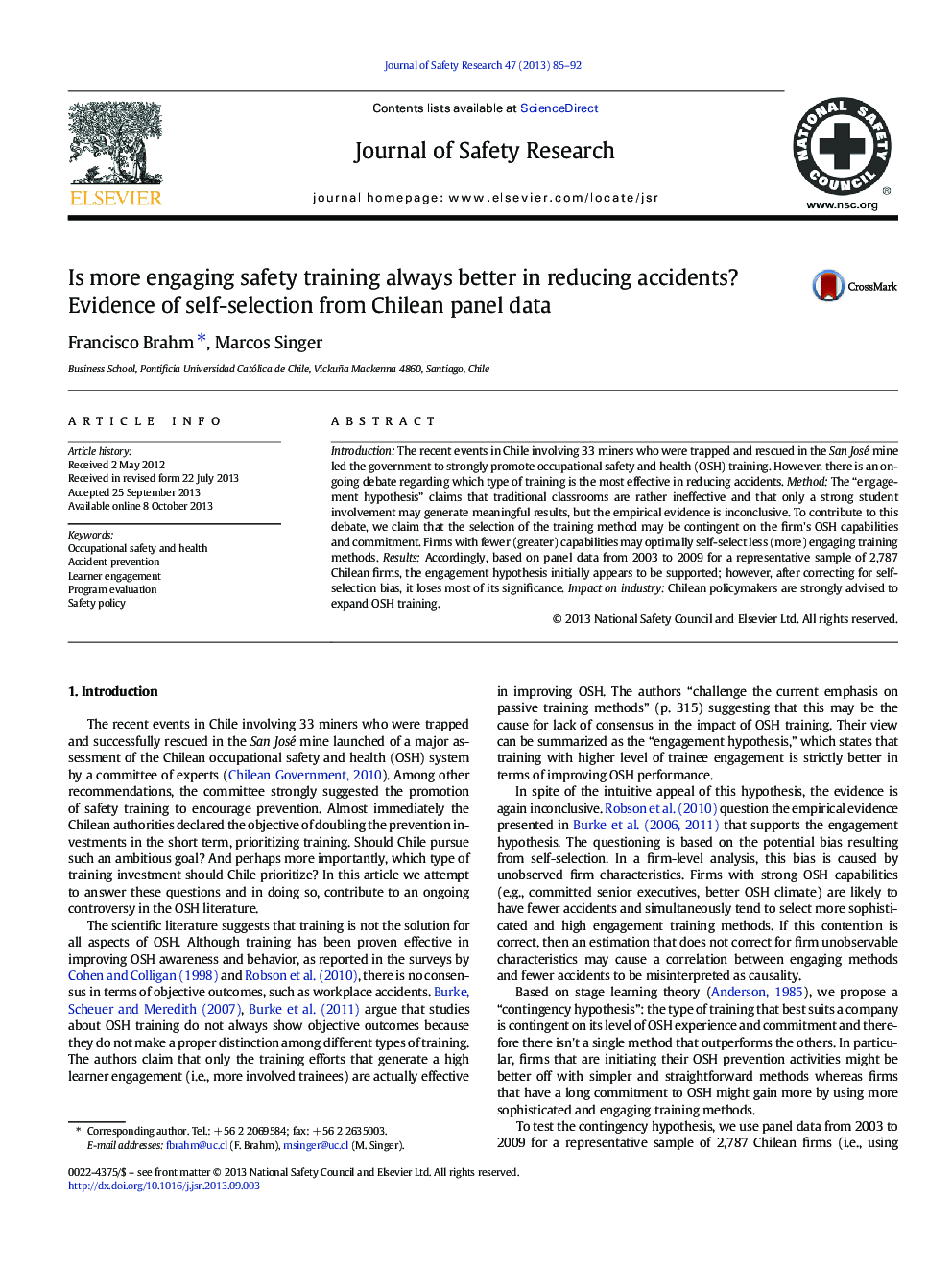| Article ID | Journal | Published Year | Pages | File Type |
|---|---|---|---|---|
| 587444 | Journal of Safety Research | 2013 | 8 Pages |
•The literature is inconclusive about the impact of OSH training in reducing accidents and whether engaging methods are better in doing so.•We use a representative sample of 2,787 Chilean firms and a Poisson fixed-effect panel data model.•We find that engaging training methods reduce more accidents than non-engaging methods.•However, the difference is greatly reduced after accounting for self-selection.•We propose that training method selection is contingent on the firm's OSH experience.•Our results contribute to the guidance and evaluation of the Chilean OSH training policy.
IntroductionThe recent events in Chile involving 33 miners who were trapped and rescued in the San José mine led the government to strongly promote occupational safety and health (OSH) training. However, there is an ongoing debate regarding which type of training is the most effective in reducing accidents.MethodThe “engagement hypothesis” claims that traditional classrooms are rather ineffective and that only a strong student involvement may generate meaningful results, but the empirical evidence is inconclusive. To contribute to this debate, we claim that the selection of the training method may be contingent on the firm's OSH capabilities and commitment. Firms with fewer (greater) capabilities may optimally self-select less (more) engaging training methods.ResultsAccordingly, based on panel data from 2003 to 2009 for a representative sample of 2,787 Chilean firms, the engagement hypothesis initially appears to be supported; however, after correcting for self-selection bias, it loses most of its significance.Impact on industryChilean policymakers are strongly advised to expand OSH training.
